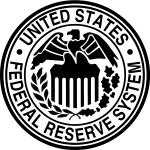
American dollar toilet paper roll
The financial crisis currently unfolding before our eyes in slow motion was inevitable and predictable. I say this because it was predicted by numbers of people. It was obvious; anyone with sense knew it was coming (a group which apparently includes very few people); and despite the fact that we’ve known for years it was going to happen, it happened anyway.
The same was true of the dot-com bubble. The inevitability of the dot-com collapse was obvious, at least as far back as 1996/1997. Everyone knew it who wasn’t paid not to know it, and it happened anyway and burst anyway.
Both of these foreseeable collapses raises the question of deliberate government policy—both bubbles were fostered and grown from tiny soap-suds with the aid of Alan Greenspan’s Fed and various other government and private and semi-private actors (in the case of the current collapse, including Fannie Mae and Freddie Mac).
Creating the bubble behind the current financial crisis took the cooperation and encouragement of a lot of people beyond the government, people who benefited a great deal from it. Let’s take Chuck Prince, the ex-CEO of Citigroup. Prince walked away from his near-destruction of Citigroup with about $41.5 million, including a $12 million bonus for his performance. The moral of the story is: drive the place into the ground, get paid well. Then there’s Merrill Lynch’s Stan O’Neal who walked away with $160 million.
Nice work if you can get it.
But if the rot was limited to the top, it wouldn’t be nearly as big a problem.
Read More



